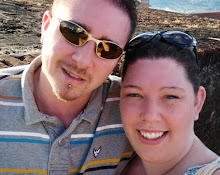
Welcome to our very first quilt along!
Some of you are seasoned quilt makers, some are pretty new and some have never even attempted a quilt! That's okay! This is a simple pattern and you can go at your own pace. You can start and stop at any time and rejoin again when life allows. You do not need to be a Fabric Fans member to participate! The more the merrier so invite your friends! There is no need to officially sign up, just jump right in to our
Flickr group.We have selected a string block as our design for this round. It's great to use up scraps or you can achieve a more pulled together look by using only a certain collection or color scheme.
Sizing of the quilt is completely dependent on you and your fabric supply. As a guideline common sizes for quilts is as follows:
Baby Quilt: 36" x 54"
Lap Quilt: 54" x 72"
Twin Quilt: 54" x 90"
Double Quilt: 72" x 90"
Queen Quilt: 90" x 108"
King Quilt: 108" x 108"
If you are new to quilting I suggest starting with a smaller quilt and not going above a Twin size. Wrangling all the fabric through your machine when quilt can be a bit challenging. Of course it IS possible and I can successfully quilt up to a Queen on my standard machine.
Fabric requirements:
You will need strips from 1"-2.5" inches wide (These can be uniform or of varying widths depending on your desired looked). As I said before this can be completely from scraps or you can cut from yardage. You will also need a 1" strip of one constant fabric for each block. I love the look of a solid, but I have also seen people use a pattern and it looks great.
How much you need is based on the quilt size. To be safe, I like to take the surface area of the quilt and multiply that by 1.75. This allows for a scrappy binding, seam allowance and error.
For example, if you were making a lap size quilt (54" x 72") the surface area would be 3,888". Multiply that by 1.75 and you have 6,804". This means you would need 4.5 yards for the front of your quilt.
You will also need enough fabric for the back of your quilt and if you choose not to do a scrappy binding you will need enough fabric for the binding. (For a lap size you would need a little less than a half yard.)
Up next will be a complete supply list. This is just enough to get you started pulling fabric choices! And don't forget to upload a pic of your fabric to the
Flickr Group!











